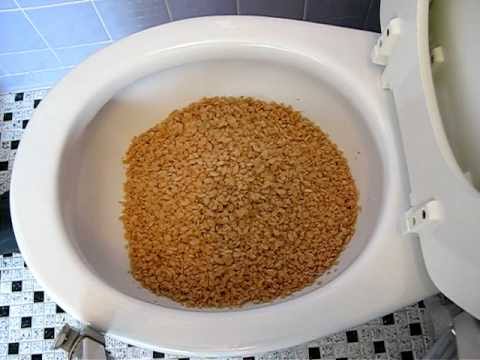How do you really feel in relation to Is it safe to flush food (especially rice) down the toilet??

Intro
Many individuals are often confronted with the dilemma of what to do with food waste, specifically when it pertains to leftovers or scraps. One common question that develops is whether it's all right to purge food down the bathroom. In this article, we'll explore the reasons that people might think about purging food, the consequences of doing so, and alternate methods for proper disposal.
Reasons why people might consider purging food
Lack of recognition
Some individuals might not recognize the potential injury brought on by flushing food down the toilet. They might wrongly believe that it's a safe practice.
Benefit
Flushing food down the bathroom may seem like a fast and easy service to disposing of unwanted scraps, especially when there's no nearby trash bin offered.
Negligence
In some cases, individuals might simply select to flush food out of large idleness, without considering the consequences of their actions.
Repercussions of flushing food down the toilet
Environmental impact
Food waste that ends up in waterways can add to air pollution and harm water ecological communities. In addition, the water made use of to flush food can stress water sources.
Plumbing concerns
Purging food can bring about clogged pipes and drains pipes, creating expensive pipes fixings and aggravations.
Sorts of food that should not be purged
Coarse foods
Foods with coarse structures such as celery or corn husks can get tangled in pipes and trigger obstructions.
Starchy foods
Starchy foods like pasta and rice can soak up water and swell, causing clogs in pipes.
Oils and fats
Greasy foods like bacon or food preparation oils need to never ever be purged down the toilet as they can strengthen and create obstructions.
Correct disposal methods for food waste
Making use of a garbage disposal
For homes geared up with waste disposal unit, food scraps can be ground up and flushed with the pipes system. However, not all foods appropriate for disposal in this manner.
Recycling
Certain food packaging products can be recycled, decreasing waste and reducing ecological effect.
Composting
Composting is an environment-friendly way to throw away food waste. Organic materials can be composted and used to enrich soil for gardening.
The relevance of correct waste management
Decreasing environmental harm
Proper waste monitoring practices, such as composting and recycling, assistance minimize pollution and protect natural resources for future generations.
Shielding pipes systems
By avoiding the technique of flushing food down the bathroom, home owners can stop expensive plumbing fixings and maintain the stability of their pipes systems.
Verdict
To conclude, while it might be alluring to flush food down the commode for comfort, it is very important to understand the prospective consequences of this activity. By taking on proper waste administration methods and throwing away food waste responsibly, individuals can contribute to healthier pipes systems and a cleaner setting for all.
FLUSH FOOD DOWN THE TOILET?
FLUSHING FOOD CAN CAUSE BLOCKED DRAINS IN YOUR HOME
All of the plumbing fixtures in your home are connected to the same sewer pipe outside of your home. This outdoor sewer pipe is responsible for transporting all the wastewater from your home to the Council sewer mains. Even small pieces of food that go down the kitchen sink can cause problems for your sewer. It should therefore be obvious that flushing larger bits of food, such as meat, risks a clog in either the toilet itself or the sewer pipes. Flushing greasy food is even more problematic because oil coagulates when it cools, coating the interior lining of your pipes.
THE TOILET IS NOT A BIN
Food isn’t the only thing that people shouldn’t be flushing down the toilet. People use the toilet to dispose of all kinds of things such as tampons, makeup wipes, dental floss, kitty litter and even underwear. Water goes to great lengths to educate residents about the high costs and stress placed on wastewater treatment systems simply from people flushing the wrong stuff down the toilet. It costs taxpayers millions of dollars each year, and homeowners thousands in blocked drain repairs.
FLUSHING FOOD IS A WASTE OF WATER
Flushing food is a waste of our most precious resource - water. In June this year Level 1 water restrictions were introduced to protect water supply from drought conditions. Much of New South Wales continues to be affected by prolonged drought with recent figures revealing up to 97 per cent of the state remains in drought. Depending on whether you have a single or dual flush toilet, every single flush uses between five and 11 litres of water. In the current climate this is a huge amount of water to be wasting on flushing food that should be placed in the bin (or better yet, the compost).
https://www.jabplumbingsolutions.com.au/blog/can-you-flush-food-down-the-toilet

We were shown that article about Is it safe to flush food (especially rice) down the toilet? from a good friend on another website. Sharing is caring. Helping others is fun. Thanks so much for going through it.
Quote & Schedule
Comments on “Can You to Flush Food Down the Toilet?”